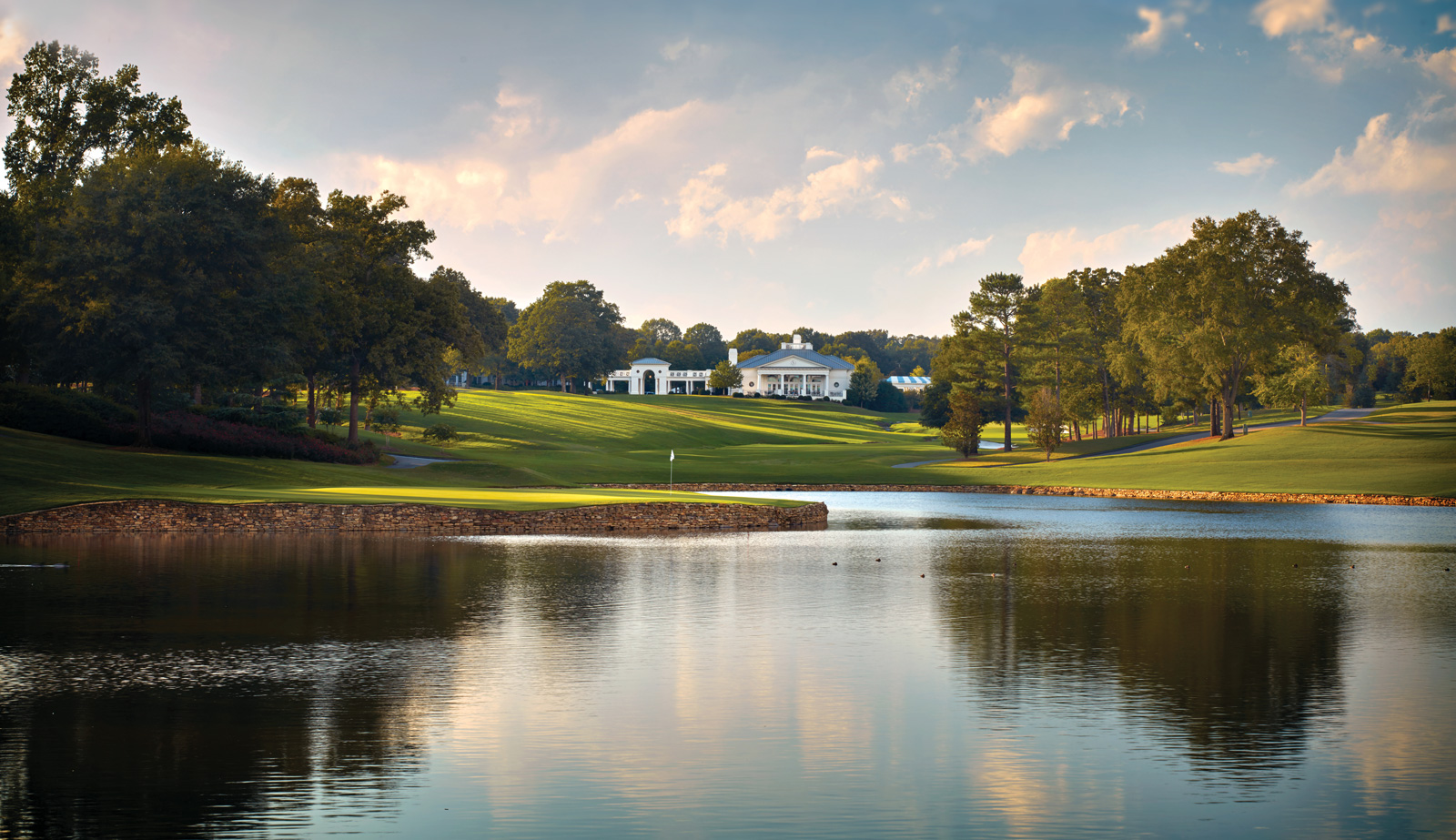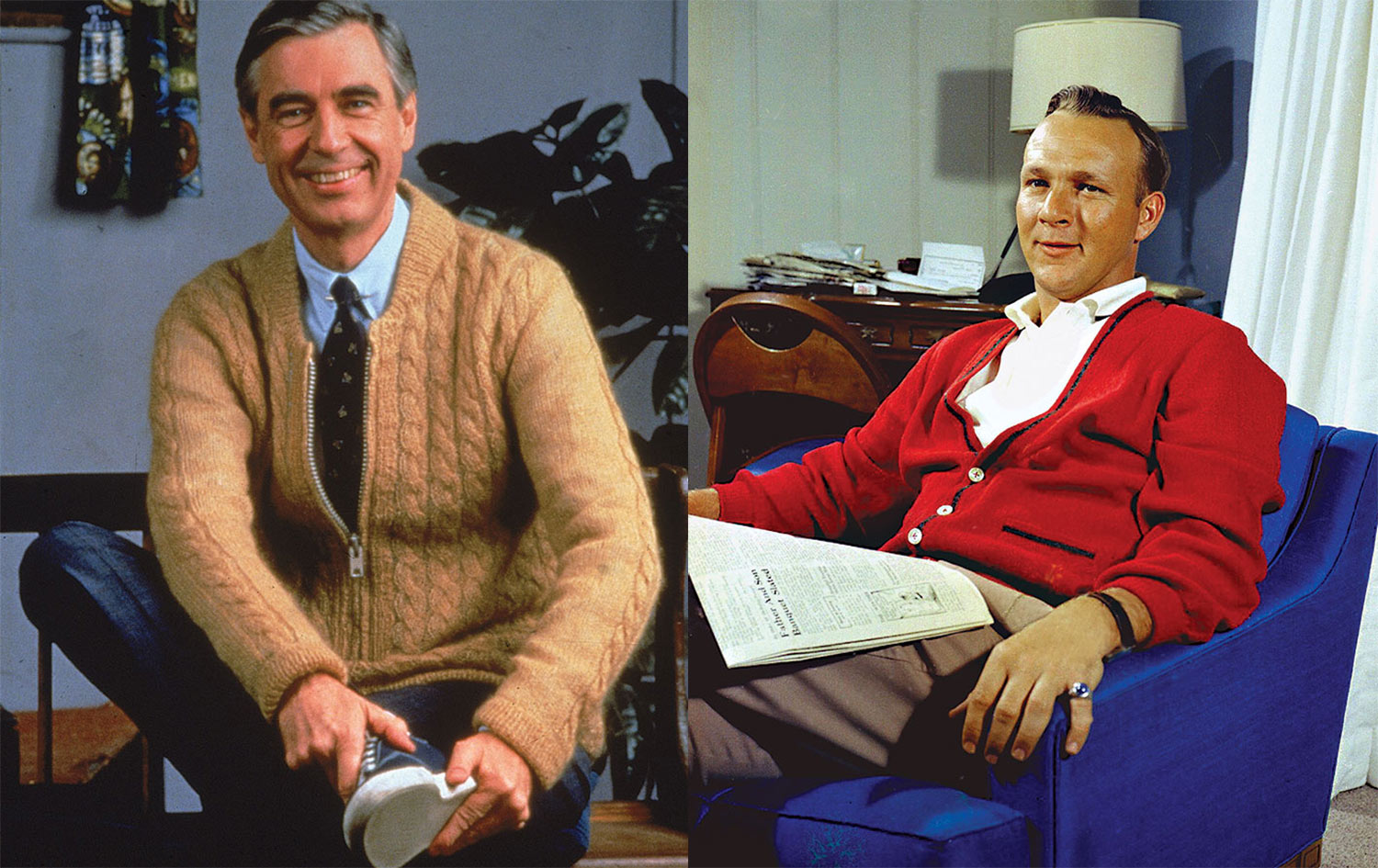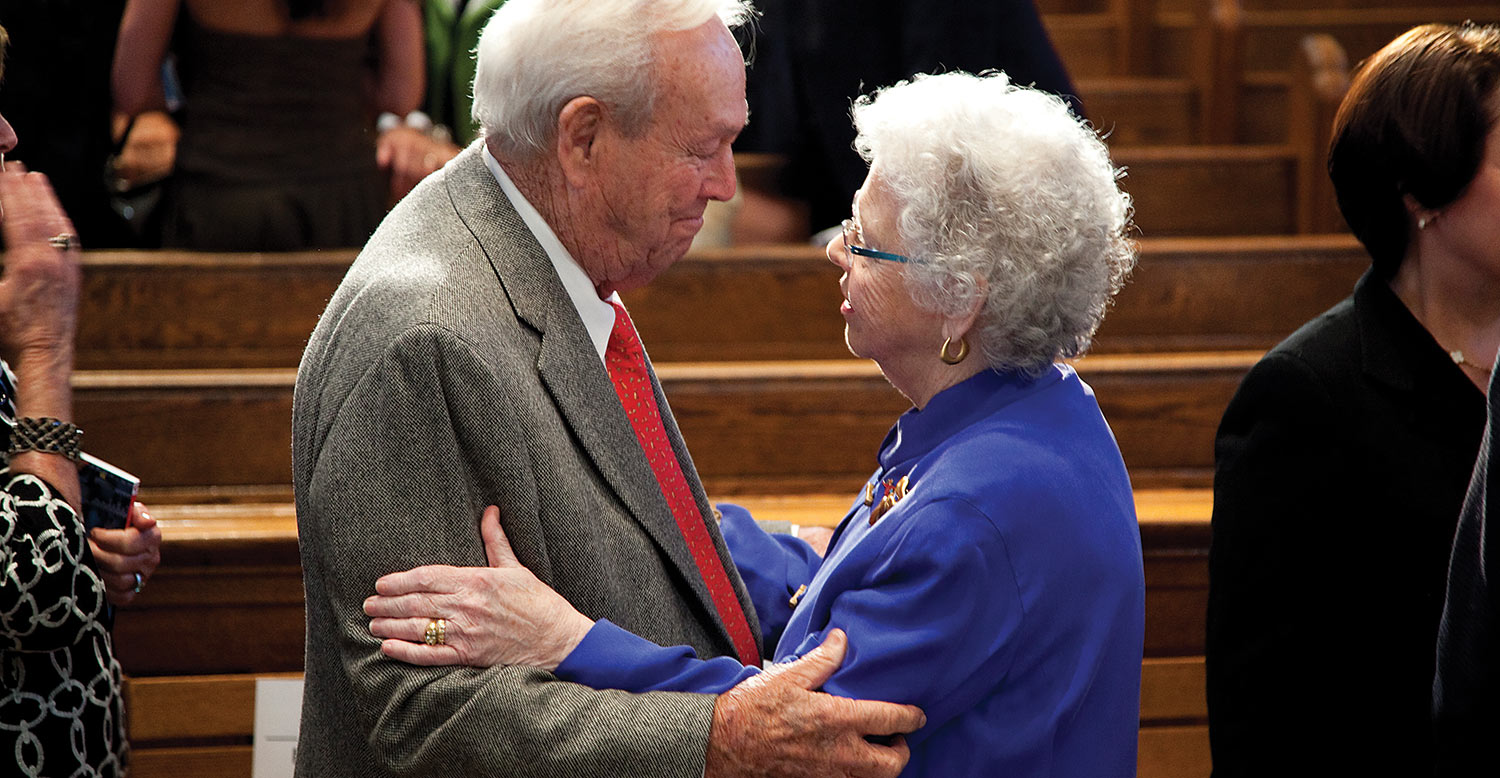
It covers only a few square miles, the population has never been greater than 12,000 and it’s not exactly on the main drag; off the highway an hour or so east of Pittsburgh. And yet in the span of just over a year, Latrobe, Pennsylvania, produced two individuals who qualify as “legends.”
It’s an extraordinary thing
Fred Rogers (“Mister Rogers” to his many millions of fans) was born here in February of 1928, and all-around legend Arnold Palmer was just behind him, born in September of 1929. Rogers was a year ahead of Palmer at Greater Latrobe High School, Rogers’ home on Weldon St. was less than 5 miles from Palmer’s near Latrobe Country Club in Youngstown, and they would have visited the same places, known the same people, watched the same fireworks each Fourth of July and so on.
Their achievements in their respective fields—television in Rogers’ case, and [primarily] golf in Palmer’s—cannot be overstated, but their true greatness came in the manner in which they manifested success: that is, with humility, affability, determination and empathy. These were good men, they were remarkable men, and in some ways they were more alike than their jobs would suggest, impacting their country and the world at large with a nearly incomprehensible strength of effect, which started in Latrobe.
“‘Is it something in the water…?’ That’s an interesting question,” says Chris Bova, laughing. The Environmental Control Supervisor for the Latrobe Municipal Authority says he can’t say for sure whether Latrobe’s [very] clean drinking water, which he’s charged with overseeing, had anything to do with both men’s greatness, but he’s not ruling it out. “The chemistry of the water, the levels being what they are, I don’t think any of those things in particular might have led to the birth of two such exceptional individuals. Maybe the lack of things? The water is very clean.”

Latrobe’s Municipal Authority didn’t come into existence until 1942, so who knows; but it’s far more likely, Bova admits, that the men’s character and drive were more influenced by their family-oriented hometown and its shared traditional values.
“I think the common element for both of them is that Latrobe is very much a neighborhood,” says Douglas Nowicki, Archabbot of Saint Vincent Archabbey in Latrobe, who knew both men well. Nowicki, who has a doctorate in child psychology, worked with Rogers for 24 years. He also worked with Palmer’s first wife, Winnie, when she joined the board of Saint Vincent and he became good friends with the Palmers. Also, the Archabbot was with Palmer and Rogers shortly before each died.
“I think a neighborhood, both for Fred and for Arnold, had fundamental values and I don’t think it’s by accident that Fred Rogers ended up with one of the major themes of his program as ‘Won’t you be my neighbor?’”
A key lyric in the theme song to the Mister Rogers’ Neighborhood children’s show, that line is also the title of a well-received documentary on Rogers that was released this June. Nowicki explains that the sentiment goes deeper than it might seem.

“A neighbor, you know, was very much a part of their upbringing, their characters,” he says. “With Palmer, really, everybody felt that he was their neighbor. He was humble and open to everyone, so he didn’t make distinctions with regard to religion or race or age or gender; those were never categories that he ever thought in. For him the question was not ‘Who is my neighbor?’ The question I think for both him and Fred was, ‘How will I be a neighbor?’ ‘Neighbor’ wasn’t a geographic location for either of them. It was more a moral understanding they experienced.”
Just one example: In 1968—just months after Martin Luther King was killed—Rogers cast African American opera singer Francois Clemmons as a police officer on his show, establishing Clemmons as the first African American to have a recurring role on a children’s TV show. A few months later, during the country’s sometimes violent conversations on desegregation, which involved clashes with regard to sharing public swimming pools, Rogers filmed an episode in which he talks about how hot the day is and how nice it would be to put his feet in some cold water. He fills a small plastic pool with water, removes his socks and shoes, rolls up his pants and is enjoying the pool when “Officer” Clemmons comes by. Rogers invites Clemmons to join him, Clemmons rolls up his uniform pants, kicks off his shoes and socks, and there, suddenly, brown and white feet are together in the pool. No big deal today, it was a dramatic and controversial image at the time.

“In our world today we tend to categorize people in terms of religion, race, age, gender,” says Nowicki. “We tend to differentiate and to discriminate often on the basis of those, but Fred and Arnold both felt ‘forget all that, just be a neighbor.’ And I think each was able to call forth that unique particular response from whomever they had come in contact with because they embraced everyone as a neighbor.”
There’s not a lot of evidence that Rogers and Palmer spent much time together, but in a town as small as Latrobe it was inevitable that their lives overlapped. Both were involved in school activities, Nowicki says: Rogers was the editor of the yearbook, Palmer obviously was into sports. Palmer’s father, who was his golf coach, also gave golf lessons to Rogers, “but Fred said Arnie turned out to be a much better golfer than he did,” Nowicki remembers, chuckling.
“Both of their fathers were quite discipline-oriented, but it was a discipline that was responsible and wanted the best for each of them; it wasn’t abusive, it wasn’t done in a demeaning way.”
Latrobe social life often involved the church, and Nowicki says both the Rogers and the Palmer families were longstanding members of the community, Presbyterians who knew the leadership at Saint Vincent, the seminary and college that has been in Latrobe since 1846.

Rogers’ father received an honorary degree from Saint Vincent, as did both Fred Rogers and Arnold Palmer. In fact both men received numerous honorary degrees, with Rogers getting something like 40 over his lifetime. Both have statues of themselves in towns beyond Latrobe; both were awarded the Presidential Medal of Freedom; and both appeared on The Tonight Show—again, rather astounding as both come from a place that wasn’t formerly incorporated as a city until 1999 (Latrobe was technically a borough from its founding in 1854).
Both men also personally answered all of their fan mail. Palmer famously spent six figures per year mailing signed memorabilia back to fans who’d sent it in hoping for an autograph (which they always received) while many of the numerous examples of letters Rogers sent to fans are posted online. One user on reddit.com recalled writing to Rogers as a 6-year-old and getting a response. His father wrote to Rogers and thanked the TV star for responding to his son—and Rogers sent a response to the father as well.
That kind of behavior, Nowicki explains, was indicative not just of simple friendliness but of an inner strength and conviction to be the best person—the best neighbor—each could be.
“You could be the owner or the janitor or the car attendant; both Fred and Arnie gave each one the kind of respect that it was as if they were his personal neighbor. They had that humility and never felt, never arrogated into themselves, the sense that they were better than anyone else. That spirit made everybody feel that Fred and Arnold were their friends, and I think that’s why they both had such universal appeal.”
Follow Us On


| Cookie | Duration | Description |
|---|---|---|
| cookielawinfo-checkbox-analytics | 11 months | This cookie is set by GDPR Cookie Consent plugin. The cookie is used to store the user consent for the cookies in the category "Analytics". |
| cookielawinfo-checkbox-functional | 11 months | The cookie is set by GDPR cookie consent to record the user consent for the cookies in the category "Functional". |
| cookielawinfo-checkbox-necessary | 11 months | This cookie is set by GDPR Cookie Consent plugin. The cookies is used to store the user consent for the cookies in the category "Necessary". |
| cookielawinfo-checkbox-others | 11 months | This cookie is set by GDPR Cookie Consent plugin. The cookie is used to store the user consent for the cookies in the category "Other. |
| cookielawinfo-checkbox-performance | 11 months | This cookie is set by GDPR Cookie Consent plugin. The cookie is used to store the user consent for the cookies in the category "Performance". |
| viewed_cookie_policy | 11 months | The cookie is set by the GDPR Cookie Consent plugin and is used to store whether or not user has consented to the use of cookies. It does not store any personal data. |